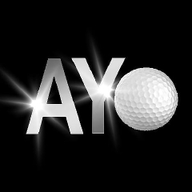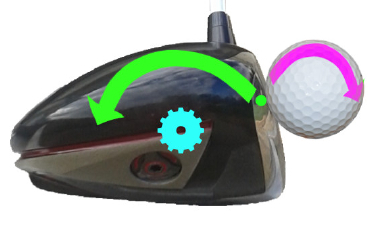This article explains how a small tweak might add 20 yards or more to your drives.
A couple of weeks ago, I did an article describing gear effect. To summarise that article,
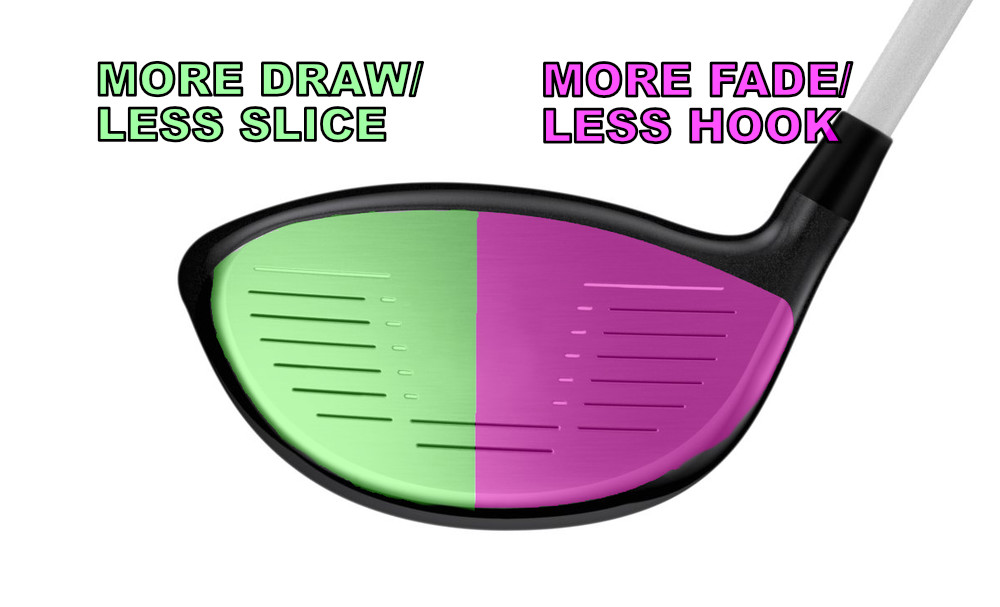 Toe hits tend to hook more/slice less
Toe hits tend to hook more/slice less- Heel hits tend to slice more/hook less
If you want to read that article and understand why, CLICK HERE
The gear effect article only looked at the horizontal component – the heel/toe part. What most people don’t know is that there is also a vertical component to this.
My Drives
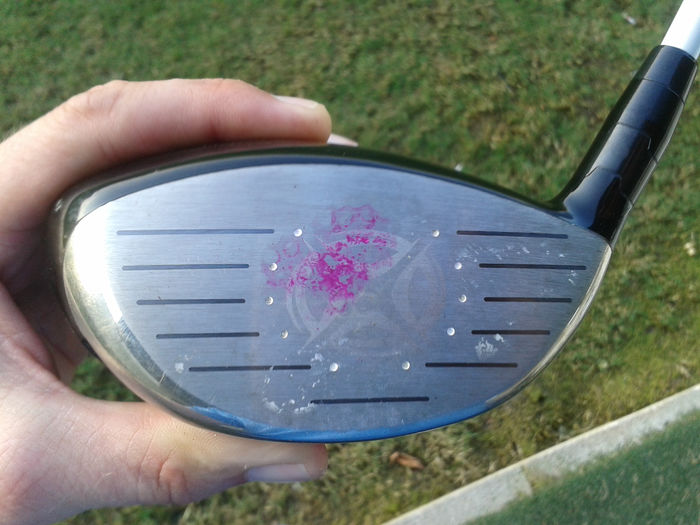 I have never been a powerful player (with only 103 mph of swing speed). However, I have been able to maximize what little power I have and turn it into serious yardage.
I have never been a powerful player (with only 103 mph of swing speed). However, I have been able to maximize what little power I have and turn it into serious yardage.
I once did an article on driver consistency and I showed my clubface after 15 shots using marker pen to indicate the strikes.
What a lot of people noticed (and commented on) was that my strikes are a little high on the clubface. I do this intentionally for a specific reason.
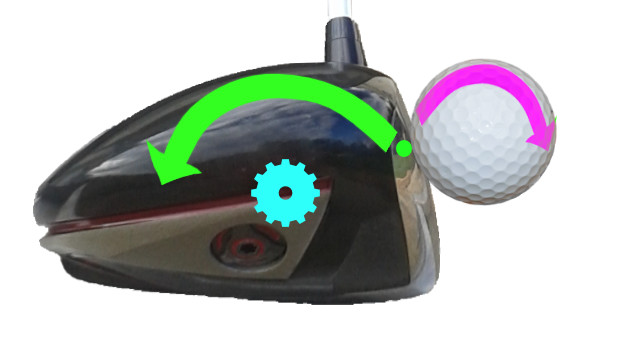 Basically, if the ball is struck on the sweet spot there is no/minimal gear effect. However, if the ball strikes above the sweet spot, the clubhead will twist in a way which adds loft.
Basically, if the ball is struck on the sweet spot there is no/minimal gear effect. However, if the ball strikes above the sweet spot, the clubhead will twist in a way which adds loft.
When the club twists in this way, it creates a counter twist on the ball (the gear-effect). While every golf shot has backspin, by striking the upper part of clubface, we can effectively reduce this backspin rate.
This can turn a shot with 3000 rpm of backspin and turn it into a shot with 2000 rpm or less.
Throw Out The Loft
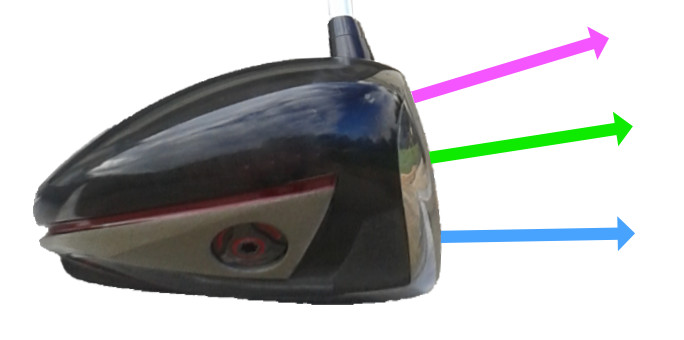 You know how your club says it has 10 degrees of loft printed on it? Well, that is only for a specific part of the face.
You know how your club says it has 10 degrees of loft printed on it? Well, that is only for a specific part of the face.
The loft of your driver actually varies depending on where you strike it on the face. This is because the club has what we call roll – where the face is convex.
This means that, by striking above the center of the face (pink), we have more effective loft, which results in a higher launch of the ball. The reverse is also true.
This is one of the reasons why I can take my 8.5 degree driver and launch it 16-18 degrees in the air.
A Powerful Combination
When you combine the two effects of striking higher on the clubface, we have a recipe for greater distance.
As I wrote in THIS ARTICLE, the combination of a high launch and low spin rate can be quite dramatic for distance.
In fact, a ball launched at 150mph with
- 8 degrees of launch and 4000 rpm spin = 238 yards carry
- 16 degrees of launch and 2000 rpm spin = 259 yards carry
That’s 20 yards extra by only changing launch and spin.
If you have ever hit that drive that didn’t feel 100% solid, but when you walked down the fairway you saw it was 20 yards past your normal hit – you probably hit this hot zone.
Reverse Is True
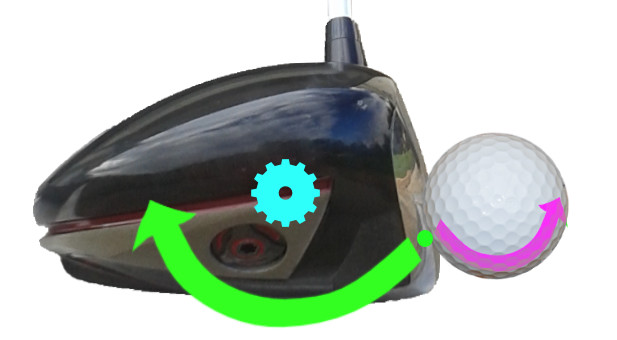 It goes without saying that, if striking high on the face = high launch and low spin, striking low on the face = low launch and higher spin.
It goes without saying that, if striking high on the face = high launch and low spin, striking low on the face = low launch and higher spin.
Striking low on the face causes the club to twist in the direction of the green arrow. This creates more backspin on the ball, as well as lower launch.
This is what many amateurs are doing, and losing a lot of distance in doing so.
Usually, this is the result of hitting too many skied shots (pop-ups) and then figuring out that teeing it lower prevents that. Unfortunately, skied shots are more a result of a steep angle of attack, and teeing it lower really produces a sub-optimal launch of the ball.
In Pictures
As a summary of vertical gear effect, this picture explains the effects of striking in a certain zone on the face.
In the red zone, we get high launch and lower spin rates. the blue zone produces lower launch and higher spin rates.
How To Do It
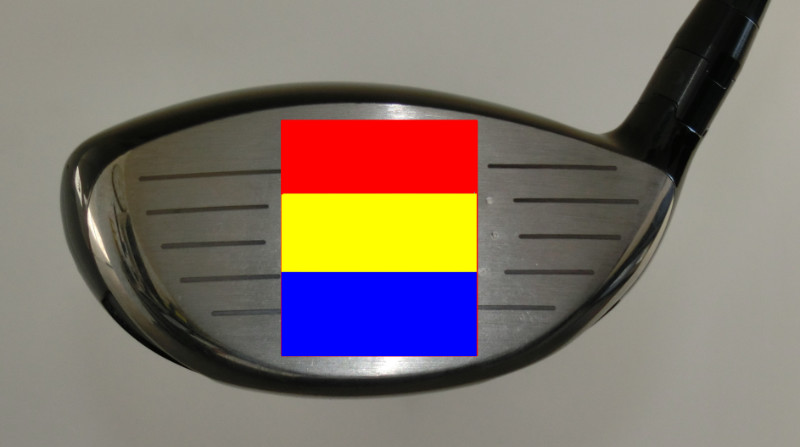 When working on this, there is a relationship between your
When working on this, there is a relationship between your
- swing arc height
- low point position
- tee height
In The Strike Plan, I not only discuss how to get this optimal strike point on the driver, but how to combine it with an upward angle of attack.
This is exactly the combination I personally use to create the incredibly efficient drives I hit.
